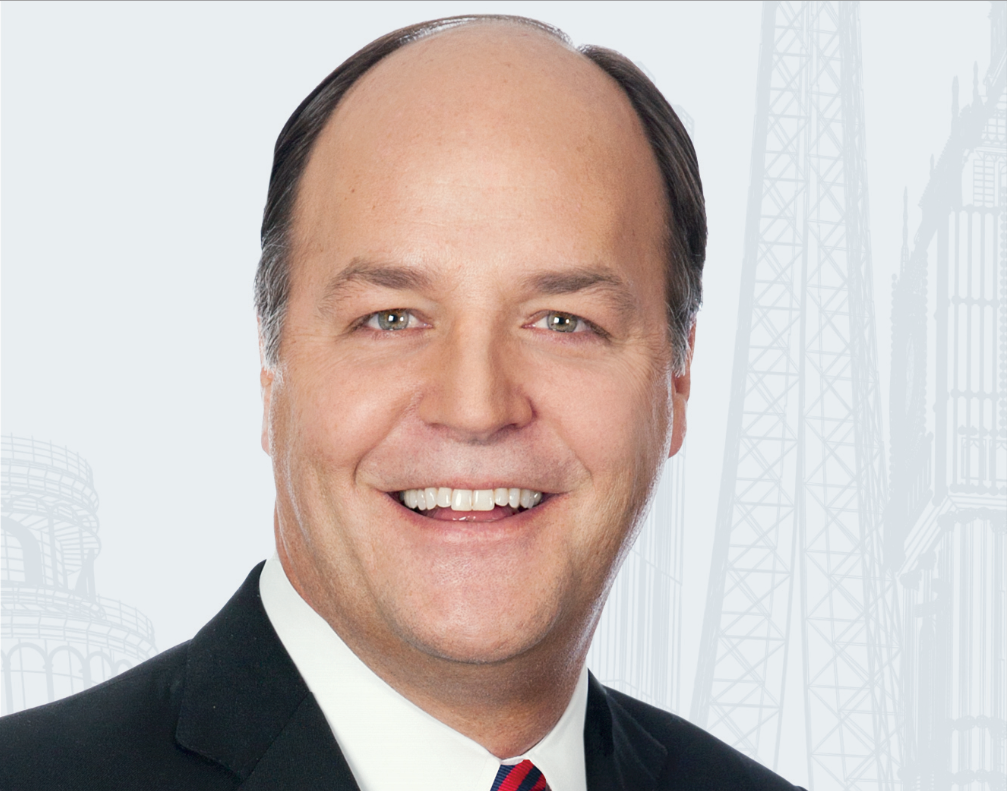Recent M&A News: As background, Akorn (AKRX-NASDAQ) agreed to be acquired by Fresenius SE & Co (FRE GY-Munich) for $34 cash per share in April 2017, valuing the deal at approximately $5 billion. Akorn competes in the $90 billion U.S. generic drug market as a developer and manufacturer of generic and branded prescription pharmaceuticals with a focus on injectables. On February 26, 2018, Fresenius announced that it was investigating Akorn’s alleged breaches of FDA data integrity requirements related to product development. Later, on April 23, 2018, Fresenius attempted to terminate the acquisition on the basis that Akorn had failed to fulfill several closing conditions, including a material breach of FDA data integrity requirements. Akorn responded by filing suit in Delaware Court seeking Specific Performance to enforce the merger agreement.
Akorn Inc. and Fresenius SE & Co. met in Delaware Court, from July 9-13, capping off a long and tumultuous back-and-forth between the two companies as Fresenius has attempted to terminate its acquisition of Akorn. A decision is expected to be handed down by Delaware Chancery Court Judge Travis Lester in the weeks following August 23rd.
In summary, Fresenius claims that Akorn did not operate in the ordinary course of business during the pendency of the merger, Akorn breached the Representations and Warranties as stated in the DMA, Akorn denied Fresenius access to certain information and Akorn suffered an MAE (Material Adverse Effect). While many believe Fresenius likely did not meet the historically high bar of proving an MAE or breach of reps and warranties, they were able to instill some doubt that Akorn operated in the ordinary course of business in the period after the DMA was signed. On the other hand, it has been said that Fresenius’s actions stemmed from buyer’s remorse given Akorn’s recent struggles due to direct competition to key products, supply disruptions, and pricing pressure.
While we still believe Akorn has slightly better odds than Fresenius in receiving a favorable court ruling, we will continue to monitor the situation due to the large potential downside in Akorn’s stock and the difficulty in handicapping how the judge will assess the ordinary course claim given limited precedent.
The Aftermath of a Major Deal Break:
As background, NXP agreed to be acquired by Qualcomm for $110 cash per share in October 2016. Under pressure from activists, the deal price was raised to $127.50 in February 2018.
It was announced last week that Qualcomm will no longer pursue its offer to acquire NXP Semiconductors as the deadline for the deal passed without receiving antitrust approval from China’s State Administration for Market Regulation (“SAMR”), which was the last regulatory approval needed to complete the transaction. Qualcomm reported earnings and subsequently announced a $30 billion share buyback program in the absence of receiving approval from SAMR. Ultimately, it is our view that the merger became a victim of the U.S.-China trade war.
Most investors owned NXP because like us they saw the deal as both strategically and financially compelling for Qualcomm. It would have diversified Qualcomm’s revenue base and been strongly accretive to EPS. While many did not view antitrust as a risk, we underestimated the impact that Sino-U.S. trade relations ultimately had on the fate of the deal.
With NXP now trading in the low $90s, many arbs and event managers have exited the position. There will be pressure on the stock, as most hedge funds may sell their positions, but there are several positives that may lend support to NXP going forward. Firstly, they will receive a $2 billion termination fee which translates to about $5.80/share. Secondly, management held a conference and their general tone was upbeat. The company also announced a $5 billion buyback, approximately 15% of the shares outstanding. Post buyback, NXP will have leverage below 1x EBITDA, less than it has historically had. NXP now trades at trough multiples, below 10x EBITDA, and derives over 40% of sales from the automotive segment, one of the fastest growing segments in the semiconductor space given the increase in electronic contents and shift toward hybrid and electric vehicles. According to Bloomberg consensus 2018 price targets for the stock range between $100-110 currently, though most of the comps are trading at 9-13x EBITDA multiple, we expect the stock to continue to trade lower post deal break, especially as investors unwind the position.
The Markets and the Economy in the Second Half of the Year:
Mario Gabelli who leads our firm recently gave GAMCO’s views on the economy and markets for the balance of the year. He believes the landscape will be shaped by four ”T’s”:
The first is Tariffs. Global GDP is $87 trillion with the U.S just over 23%, the EU about 22%, China 16% and Japan 6%. The U.S. has $20 trillion of GDP and a trade deficit of about $500 billion, including $350 billion with China. That means we are knocking 2.5% off our GDP and delivering money to China. The tariff spat is creating cost inflation at the industrial companies we own, but it is also creating investment opportunities among U.S. companies that serve the domestic market.
The second T relates to the U.S. 10-year Treasury note. The yield was 2.44%-2.73% in January, rose to 3.11% and then fell back to 2.86%. Is the market’s current multiple of Ebitda (earnings before interest, taxes, depreciation, and amortization) sustainable? We don’t think so and expect inflation to pick up sending the 10-year yield back up over 3% by year end and higher next year.
Next are Taxes. The U.S. moved to a territorial tax system from a global system for corporations, which is good. A 21% corporate tax is a magnet for business to locate here. The write-off of capital expenditures drives new demand.
The fourth T is Technology. It is attracting a lot of attention in the stock market, and will continue to do so. The tariff situation is a surprise, but it does not bother us that much. Some of it is good since it creates volatility — the ‘old normal’ in markets. That allows investors to buy the value stocks at lower prices, and makes you look less dumb for not playing the momentum stock game.
Column by Gabelli Funds, written by Michael Gabelli
To access our proprietary value investment methodology, and dedicated merger arbitrage portfolio we offer the following UCITS Funds in each discipline:
GAMCO MERGER ARBITRAGE
GAMCO Merger Arbitrage UCITS Fund, launched in October 2011, is an open-end fund incorporated in Luxembourg and compliant with UCITS regulation. The team, dedicated strategy, and record dates back to 1985. The objective of the GAMCO Merger Arbitrage Fund is to achieve long-term capital growth by investing primarily in announced equity merger and acquisition transactions while maintaining a diversified portfolio. The Fund utilizes a highly specialized investment approach designed principally to profit from the successful completion of proposed mergers, takeovers, tender offers, leveraged buyouts and other types of corporate reorganizations. Analyzes and continuously monitors each pending transaction for potential risk, including: regulatory, terms, financing, and shareholder approval.
Merger investments are a highly liquid, non-market correlated, proven and consistent alternative to traditional fixed income and equity securities. Merger returns are dependent on deal spreads. Deal spreads are a function of time, deal risk premium, and interest rates. Returns are thus correlated to interest rate changes over the medium term and not the broader equity market. The prospect of rising rates would imply higher returns on mergers as spreads widen to compensate arbitrageurs. As bond markets decline (interest rates rise), merger returns should improve as capital allocation decisions adjust to the changes in the costs of capital.
Broad Market volatility can lead to widening of spreads in merger positions, coupled with our well-researched merger portfolios, offer the potential for enhanced IRRs through dynamic position sizing. Daily price volatility fluctuations coupled with less proprietary capital (the Volcker rule) in the U.S. have contributed to improving merger spreads and thus, overall returns. Thus our fund is well positioned as a cash substitute or fixed income alternative.
Our objectives are to compound and preserve wealth over time, while remaining non-correlated to the broad global markets. We created our first dedicated merger fund 32 years ago. Since then, our merger performance has grown client assets at an annualized rate of approximately 10.7% gross and 7.6% net since 1985. Today, we manage assets on behalf of institutional and high net worth clients globally in a variety of fund structures and mandates.
Class I USD – LU0687944552
Class I EUR – LU0687944396
Class A USD – LU0687943745
Class A EUR – LU0687943661
Class R USD – LU1453360825
Class R EUR – LU1453361476
GAMCO ALL CAP VALUE
The GAMCO All Cap Value UCITS Fund launched in May, 2015 utilizes Gabelli’s its proprietary PMV with a Catalyst™ investment methodology, which has been in place since 1977. The Fund seeks absolute returns through event driven value investing. Our methodology centers around fundamental, research-driven, value based investing with a focus on asset values, cash flows and identifiable catalysts to maximize returns independent of market direction. The fund draws on the experience of its global portfolio team and 35+ value research analysts.
GAMCO is an active, bottom-up, value investor, and seeks to achieve real capital appreciation (relative to inflation) over the long term regardless of market cycles. Our value-oriented stock selection process is based on the fundamental investment principles first articulated in 1934 by Graham and Dodd, the founders of modern security analysis, and further augmented by Mario Gabelli in 1977 with his introduction of the concepts of Private Market Value (PMV) with a Catalyst™ into equity analysis. PMV with a Catalyst™ is our unique research methodology that focuses on individual stock selection by identifying firms selling below intrinsic value with a reasonable probability of realizing their PMV’s which we define as the price a strategic or financial acquirer would be willing to pay for the entire enterprise. The fundamental valuation factors utilized to evaluate securities prior to inclusion/exclusion into the portfolio, our research driven approach views fundamental analysis as a three pronged approach: free cash flow (earnings before, interest, taxes, depreciation and amortization, or EBITDA, minus the capital expenditures necessary to grow/maintain the business); earnings per share trends; and private market value (PMV), which encompasses on and off balance sheet assets and liabilities. Our team arrives at a PMV valuation by a rigorous assessment of fundamentals from publicly available information and judgement gained from meeting management, covering all size companies globally and our comprehensive, accumulated knowledge of a variety of sectors. We then identify businesses for the portfolio possessing the proper margin of safety and research variables from our deep research universe.
Class I USD – LU1216601648
Class I EUR – LU1216601564
Class A USD – LU1216600913
Class A EUR – LU1216600673
Class R USD – LU1453359900
Class R EUR – LU1453360155
Disclaimer:
The information and any opinions have been obtained from or are based on sources believed to be reliable but accuracy cannot be guaranteed. No responsibility can be accepted for any consequential loss arising from the use of this information. The information is expressed at its date and is issued only to and directed only at those individuals who are permitted to receive such information in accordance with the applicable statutes. In some countries the distribution of this publication may be restricted. It is your responsibility to find out what those restrictions are and observe them.
Some of the statements in this presentation may contain or be based on forward looking statements, forecasts, estimates, projections, targets, or prognosis (“forward looking statements”), which reflect the manager’s current view of future events, economic developments and financial performance. Such forward looking statements are typically indicated by the use of words which express an estimate, expectation, belief, target or forecast. Such forward looking statements are based on an assessment of historical economic data, on the experience and current plans of the investment manager and/or certain advisors of the manager, and on the indicated sources. These forward looking statements contain no representation or warranty of whatever kind that such future events will occur or that they will occur as described herein, or that such results will be achieved by the fund or the investments of the fund, as the occurrence of these events and the results of the fund are subject to various risks and uncertainties. The actual portfolio, and thus results, of the fund may differ substantially from those assumed in the forward looking statements. The manager and its affiliates will not undertake to update or review the forward looking statements contained in this presentation, whether as result of new information or any future event or otherwise.










